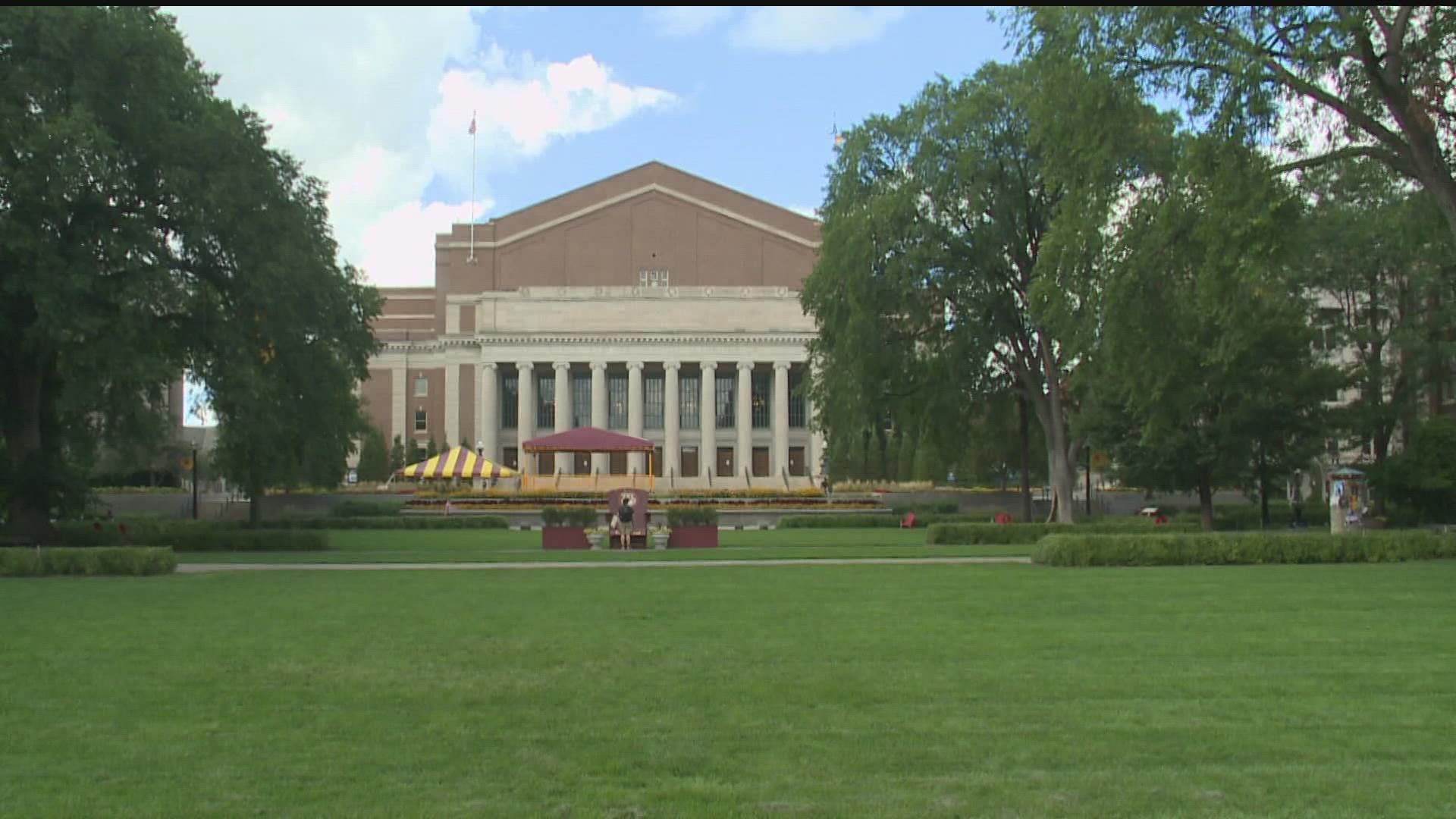MINNEAPOLIS — Jonathan Zielinski arrived on the University of Minnesota campus this week with a big smile on his face.
"I'm pretty excited," the incoming freshman said. "A lot is going to happen the next few weeks."
A native of Wisconsin, Zielinski considered attending the University of St. Thomas but ultimately settled on the U of M, partly because he receives in-state tuition through the reciprocity program with neighboring states.
Even so, the combination of in-state tuition, fees, room and board, and other expenses still adds up to about $31,000 for first-year students like Zielinski.
"Many of us come from different living situations," he said. "Asking an 18-year-old to bulk that up, and with student loans these days, interest rates will get you — especially in the next 10 years."
No matter what side you're on, President Joe Biden's student loan forgiveness plan revitalized the national conversation on college costs this week, as thousands of students across the country return to public and private campuses for the fall semester.
A lot of them are facing significantly higher tuition in 2022-23. The University of Minnesota, for example, hiked tuition by 3.5% on the Twin Cities campus, matching the highest percentage increase in exactly a decade. The Minnesota State system also implemented a 3.5% increase at almost all of its institutions.
"That seems to be typical from among the tuition increases I've seen so far," said Mark Kantrowitz, a national expert on college costs and student loans who has testified about the topics before Congress. "And it's not surprising considering we are coming out of a pandemic and economic downturn. It seems like they may be holding off on larger increases until maybe next year."
Many schools, including the University of Minnesota in 2020-21, froze tuition for students early in the pandemic. Now, these same institutions must adjust to the impact of inflation, leading some to raise revenue through tuition increases. The University of Iowa increased in-state tuition by 4.25 percent this year, while Penn State raised in-state prices by 5 percent, to name just a few examples.
"College costs are based on faculty and staff salaries, facility costs, equipment costs, energy costs, many of which have gone up — especially energy costs," Kantrowitz said. "Their budgets have been squeezed."
Other institutions have chosen to extend tuition freezes, while looking for revenue sources in other areas. The University of Wisconsin, for instance, will again freeze resident tuition in 2022-23, leaving rates unchanged since 2013-14.
The University of Minnesota, which is welcoming its second-largest freshman class in history this fall, points out that the 3.5% tuition hike on the Twin Cities and Rochester campuses remains well below the rate of inflation (in-state tuition alone costs about $14,000 in 2022-23). Same goes for the Minnesota State system, where all seven universities charge tuition somewhere in the ballpark of $9,000 to $10,000.
Both systems also hope the tuition increases will be offset by an increase in federal and state grant programs, along with other sources of financial aid.
"Focus on the net price," Kantrowitz said. "Comparing colleges based on the net price is going to reflect your actual out-of-pocket costs for college, not just the sticker price, which really isn't relevant to most people."
Many students, of course, will still rely on loans to help them pay.
"I'm happy now," Jonathan Zielinski said as he prepares to start his freshman year at the U of M, "but who knows how happy I'll be in 10 years when I'm trying to pay all this back. But yeah I'm most certainly thrilled to be here and can't wait to get started."
Watch more local news:
Watch the latest local news from the Twin Cities in our YouTube playlist:

